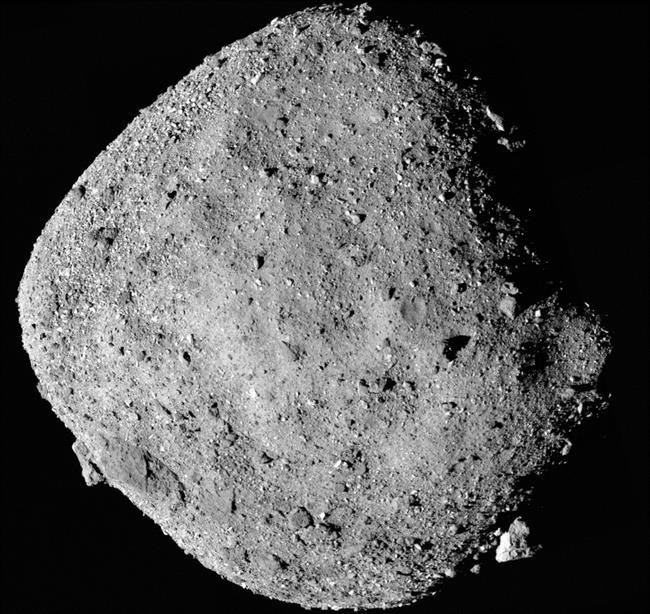MONTREAL — Seven years after it blasted into space to snag a sample of an asteroid, a spacecraft delivered its rare cargo on Sunday — and Canada is getting a piece of the interstellar bounty.
The NASA-led mission launched OSIRIS-REx into space in 2016 to collect from the surface of an asteroid material that scientists hope will offer them insight into the formation of the solar system. The spacecraft began orbiting the asteroid — called Bennu — in 2018 and grabbed a sample in 2020.
It started its return trip to Earth in 2021, and a capsule with the rocks and space dust landed Sunday morning in the Utah desert while the spacecraft continues on a mission to another asteroid.
Scientists estimate the capsule holds at least a cup of rubble from the carbon-rich Bennu, but won't know for sure until the container is opened. Some spilled and floated away when the spacecraft scooped up too much and rocks jammed the container's lid during collection three years ago.
Canada contributed a laser altimeter to the mission — a device that measures altitude and distance — that has allowed Bennu to become the "most precisely surveyed body in our solar system," says Cameron Dickinson, a staff engineer at Canadian space company MDA Ltd., which designed the Canadian component of the spacecraft.
By taking billions of measurements of the asteroid over two years, Canada's altimeter — known as OLA — helped scientists select the best location on the asteroid from which to gather a sample. The craft then briefly landed on the asteroid to collect the material.
"In total, we laid down more than three billion measurements … so this now provides a very highly precise map of the asteroid, Dickinson told a recent news conference.
NASA’s OSIRIS-REx is the first asteroid sample-return mission in which Canada has participated — and it entitles the country to some of the space rocks.
"In exchange for this contribution, Canadian scientists have been on the OSIRIS REx science team from the very beginning," John Moores, science adviser to the president of the Canadian Space Agency, told a recent briefing on the mission.
"As well, Canada will become the fifth country in the world to receive a sample collected in space."
Tim Haltigin, planetary senior mission scientist with The Canadian Space Agency, has worked on the project for a decade. Asteroids, he said, are leftover ingredients from the formation of the solar system, and getting a sample from one "is sort of like going back into a cosmic mixing bowl and pulling out individual grains of sugar and a bit of flour and, you know, maybe a chocolate chip."
"And so this is how we're able to study the raw ingredients of the solar system as they were billions and billions and billions of years ago," Haltigin said.
The mission selected Bennu because it was close enough to reach and large enough from which to secure a sample — and also because of what it is made of.
"There was only about a handful (of asteroids) that were made of some of the most interesting scientific materials that allow us to answer some of these fundamental questions about the origins of the solar system," Haltigin said.
A piece of Bennu won't be coming to Canada right away — the country's space agency needs to first build a facility in which to store the rare find.
"We're not on the same timeline as NASA to receive the sample — that's been understood since the beginning," said Caroline-Emmanuelle Morisset, program scientist, space exploration development with the CSA. "The sample will reside at NASA for a time before it's transferred to Canada."
"What we need is a clean room," Morisset said. "Those are rooms where the air is all filtered to ensure that there's no particulates from Earth that come in contact with the sample."
The total size of the shipment of dust and pebbles is about 250 grams, plus or minus 100 grams; Canada's portion is about four per cent of that — somewhere between six and 14 grams, Morisset said.
But she says that's plenty to keep scientists busy for years. The two Japan-led Hayabusa missions brought back a total of about five grams of asteroid, which she said provided decades worth of science.
"You know, with milligrams of sample we can do a lot of science," Morisset said.
This report by The Canadian Press was first published Sept. 24, 2023.
-- with files from The Associated Press.
Sidhartha Banerjee, The Canadian Press



